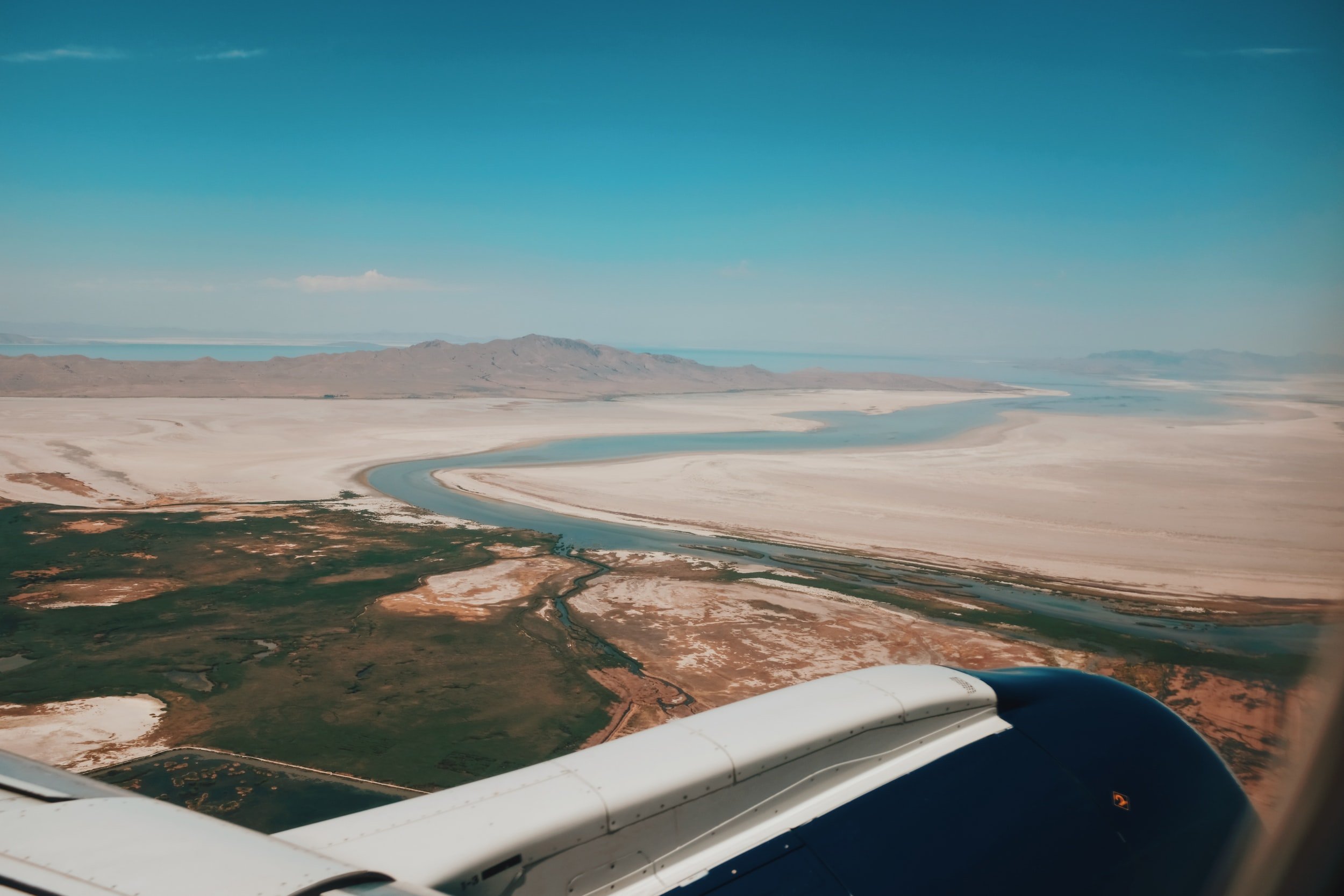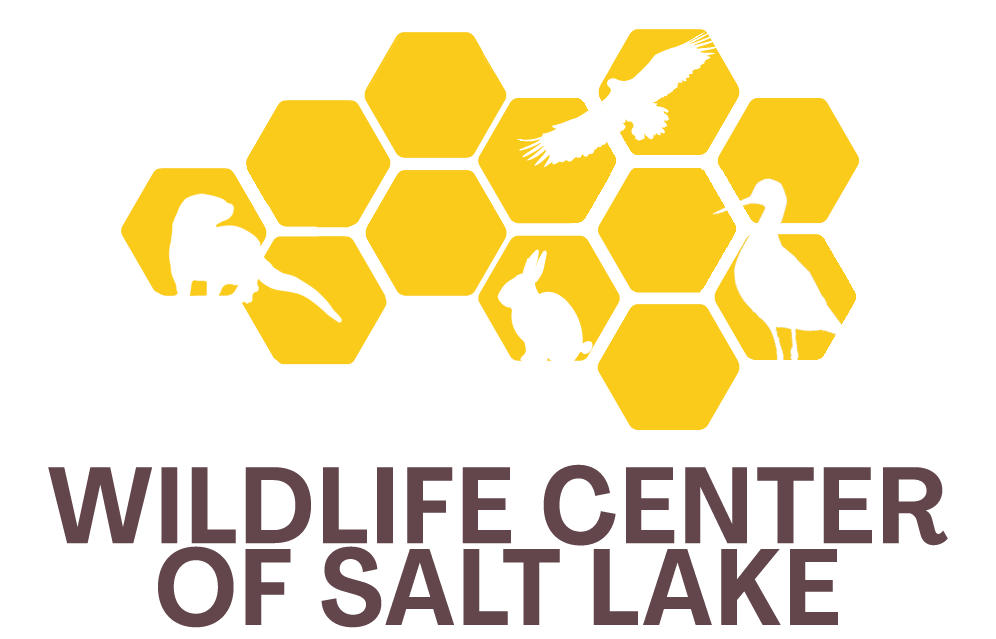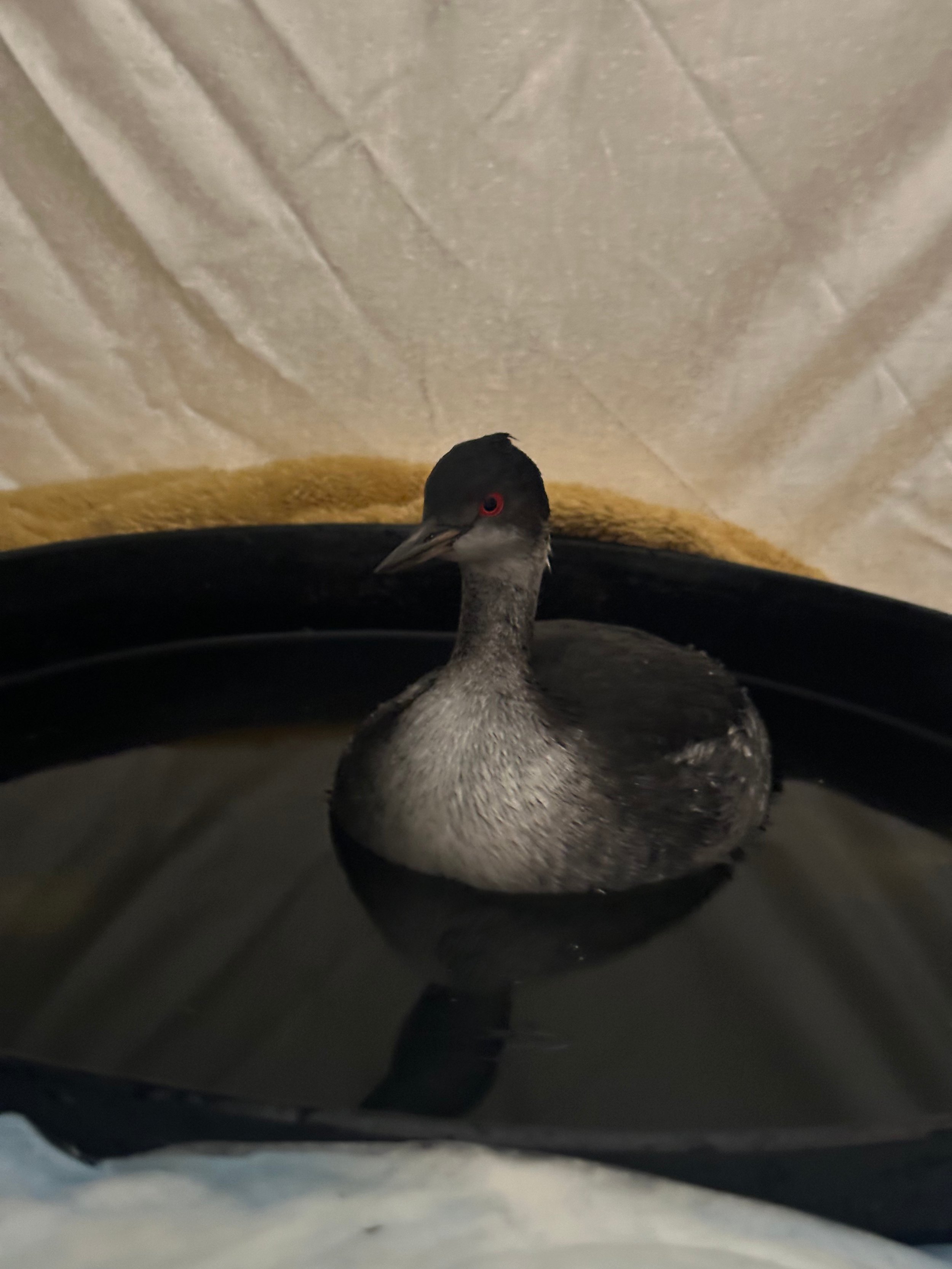
2024 Patient Success Stories
Downy woodpecker #24-976 was rescued from a Bountiful home after a window collision. The bird arrived weak, dazed, and unable to fly with a drooping wing. After a physical exam, WCSL staff were concerned about a possible coracoid fracture causing the wing to droop and restricting the flight capability. She made a full recovery and was released back into the same Bountiful neighborhood to be reunited with her family.
Window collisions are a top reason that birds arrive at our facility. There are several methods that can be used to mitigate window collisions including window treatments such as the "Acopian Bird Curtain." See more about window treatments here or read more about preventing window collisions here.
The story of a beauty queen
Northern saw-whet owl #24-1807 was found outside of a large building, bleeding and unable to move. It is easy to see in this first picture that there was quite a significant traumatic injury to the left side of the bird. We highly suspect that this bird experienced a window collision while he was migrating south. Several anthropogenic (human-caused) things may cause interrupted (or deadly!) migration for birds, though we do know know 100% for sure if this was the case here. After some pain management medications, R&R, and several meals, we were able to release this bird back into the wild. It is always a beautiful moment to see these birds take flight after a successful rehabilitation.
If you want to help birds like this Northern saw-whet owl on their fall journey, please see Three Ways You Can Help Migrating Birds This Fall, published by Audubon.
The cost incurred for this Northern saw-whet owl in care was about $230.00 If you would like to support Wildlife Center of Salt Lake and help us to rehabilitate and release more birds like this one, please consider a donation.
Swainson's hawk #24-1759 arrived to our center after being found in a front yard and unable to fly. This bird was quite a mystery, as staff noted that she had a small amount of blood on her tail feathers, but no injuries and no other blood on her body. Based on her weakness and her quick 3-week recovery, we guessed that she may have been hit by a slow-moving car causing soft-tissue injuries which kept her from flying away right away. She passed her flight test with flying colors and was released after passing all her release criteria.
They say you shouldn’t have favorites
Male California quail #24-1810 is spending the pumpkin spice season in the hospital. Patient 24-1810 came to us after being entangled in some netting. The rescuer jumped into action, as this quail is part of a larger group that they enjoy in their yard every day. It is an absolute honor to help these wild animals that bring so much joy to people, and also to meet the wonderful humans who feel compelled to help them when they have experienced a traumatic event. This little guy was treated for a larger superficial abrasion (likely obtained from the struggle after becoming entangled) as well as a deeper laceration on his leg that we were very afraid had affected a lateral tendon. After seeing one of our world-famous avian board-certified veterinarians, he was given the “all-clear.” We are so excited for his release (coming soon!)!
Entanglements are sometimes difficult to prevent! Mesh from sod that was previously hidden may become more apparent if grass dies, some birds become entangled in natural vines, and overall it is difficult to survey every inch of your yard! We recommend trying your best, cleaning up after gardening projects, and also looking around in public areas for sources of entanglement that could be a hazard to birds and cleaning them up! The rescuer did a fantastic job with this guy and got him right into us for care which is the most critical action step for a successful rehabilitation and release!
A re-nesting success!
Western screech owl #24-199 in-hospital after receiving subcutaneous fluids
Western screech owl #24-199 was found by an amazing family in Sandy on their back porch. Fearing the worst, they contacted friends and family members trying to find a safe solution for this little friend. They reached out to WCSL and we gave overnight instructions and took the bird in the next day. On intake, this bird received a full physical exam to check for any possible injuries. He was deemed a healthy owlet with minor dehydration and was administered subcutaneous fluids to correct the dehydration. He didn’t eat overnight so we also fed him a small meal to keep him sustained. We worked with a local falconer and the family who found him to get a plastic basket in a tree where owls have been seen before. It took a few tries, but eventually he successfully “branched” out of the basket the next day and a parent was seen nearby. The finders reported a successful “re-nesting” even though he was likely ready to fledge and just needed minor assistance.
Wild animals do best in the care of their wild parents. Humans will never be able to raise animals as well as their natural parents can, and it is our responsibility to make every effort to keep these animals in the wild. This re-nesting effort was a success, but they are not always successful, and we are here to provide support for the cases that need extra care.
Western screech owl #24-199 on a branch near his replacement nest (photo sent to us by the finder)
Burrowing owl bucket list
Burrowing owl #24-115 arrived looking extremely concerned about his situation at the end of March after being captured by law enforcement following entanglement with a barbed wire fence. Barbed wire fencing can be a deadly hazard for birds, but we were thankful that this officer took time from his day to rescue this important little owl.
Burrowing owls are one of the more elusive owls in our state, preferring deserts and rural areas over our urban neighborhoods. They are listed as a "species of special concern" here in Utah due to population decline and are listed as an endangered species in Canada. We are very proud to say that this owl passed his test flight and has been released!
What is on his bucket list you ask? 1) eat mice 2) make burrowing owl babies 3) live free
A Canada goose, eh?
There was nothing silly about this goose that suffered from a fishing line entanglement. Canada goose #24-85 was lucky that a Good Samaritan spent two days trying to capture him, and thus rescuing him from a deadly fate. This goose would have certainly lost his leg due to the fishing line cutting off his blood flow. We have to be extremely careful with the medications that we use to treat wild geese since they are considered game animals so luckily this bird arrived just in time and didn’t need antibiotics! We were too focused on the care of the bird to get good before photos of the feet, but in the left picture seen below, his leg and foot had swollen up to be twice the size of what it would normally be. Ouch! In the photo to the right you can see a minor line which may always be there but our staff confirmed adequate tissue perfusion before he was released! Canada geese may be common, but they are a federally protected species and at one time were at risk of extinction! Read about fishing line entanglement here and make sure to pack out what you pack in!
Aerial predator in a small package
Merlin #24-80 was released back into his home after 13 days in care. This bird walked up to a homeowner and was unable to fly. On intake, his right wing was swollen and bruised, and drooping as a result of pain. This was the cause of him being “grounded.” He was promptly started on pain management medications and fluid therapy in preparation for an anesthetized exam the next day since we were worried about a fracture. Luckily (whew!) we discovered severe bruising was his only finding (no breaks!). This is commonly referred to as a "soft tissue" injury. If left in the wild, the bird would certainly have starved to death as a result of being unable to hunt for aerial prey. After 13 days, he received a test flight and passed with A+++. Good job, Merlin #24-80!!!
America’s bird - The American robin
American robin #24-47 arrived after being found on the ground unable to fly. At intake, this little friend received a full physical exam and although we suspected some type of trauma, it was not confirmed the exact cause. This robin made a full recovery and was released after a course of pain management medications, fluid therapy, dietary supplementation, and 27 days in care. He was released near a group of large conifers and as soon as he flew up into a tree, we heard a sea of robins chattering with excitement. See the release video on TikTok.
Two songbirds, different treatment
Photo: Kimberly Lightbody @kim_lightbody
Dark-eyed juncos #24-11 and #24-46 were admitted a month apart from each other but released on the same day. This is a great example of how each individual bird requires quite different care and length of stay. Both juncos were suspected window collision cases, however junco #24-11 experienced a fracture which required extended medication and hospital rest before we could fully evaluate her for release. Junco #24-46 was stunned but alert on intake, and required just a few days of medication before release. See release video on TikTok.
Learn more about what you can do to prevent window collisions here.
Please consider making a donation of just $5 to help us cover costs, keep our center running and able to return birds like this back to the wild!
A real-life “Utah Raptor” gets a second chance
Photo: Kimberly Lightbody @kim_lightbody
We were honored to release this beautiful Sharp-shinned hawk, patient #24-58 back into its wild home. #24-58 experienced trauma after colliding with a window and after several days of in-hospital care, we were able to give this bird back its freedom. We want to shout from the rooftops (a place in which these birds are often seen in urban neighborhoods) that this bird was given a second chance through the support of our community. WCSL volunteers, supporters, and local organizations that choose to give to non-profits should be proud to know their dollars are very literally saving animal lives and giving a second chance to animals impacted by human-wildlife conflict. If you would like to join our supporters with a gift to Wildlife Center of Salt Lake to help birds like this, please visit our donation page.
Learn more about what you can do to prevent window collisions here.
See this bird’s release on our YouTube channel.
S.O.S. save our songbirds
Photo: Kimberly Lightbody @kim_lightbody
Dark-eyed junco #24-17 was captured and injured by a domestic cat in January of this year. Utah residents are most likely to see these brilliantly beautiful songbirds in their neighborhoods during winter months. #24-17 was placed on a course of antibiotics to prevent infection from a cat bite wound but needed extra time to grow his feathers back after they were violently ripped out during his attack. While in the hospital, volunteers enjoyed his singing, but we were even more thrilled to see him regain his flight and be successfully released into his wild home.
We love our feline companion animals, but when left unattended, they can certainly get into trouble - or rather get songbirds into trouble! How can you let your cat enjoy the outdoors and keep birds safe as well? Catios, cat tents, supervised outside time, and even kitty fashion items can all contribute to a solution! Learn more about how to keep birds and cats safe on the Audubon website here.
Consider making a donation so that we can continue helping native Utah songbirds! View the release video for Dark-eyed junco #24-17 here.
WCSL helps “grebes in need”
Photo: Kimberly Lightbody @kim_lightbody
Pied-billed grebe #24-19 was brought into Wildlife Center of Salt Lake after being found on the ground, unable to fly or walk during a snowstorm. This is a common occurrence in grebes and is even termed "grounded grebe" by wildlife rehabilitators everywhere, often happening during incidences of poor weather conditions. The Good Samaritan that rescued this perfect bird was indeed a hero, as they scooped grebe #24-19 from the side of the road, where it was sure to have been hit by a car if not rescued.
Grebes are built for a life on the water, so much so that they aren't very mobile on land and must have a long runway of water to be able to take off and fly again. It's been theorized that they can wind up stranded on dry land because they mistake wet pavement for a body of water.
When this grebe arrived at the center, a full physical examination was performed to evaluate for any other possible reason that he would be "grounded" and unable to fly (broken bones, poor health), but being in perfect health, this tiny friend was given a comfortable place to rest overnight and was released in a wetlands area populated by other grebes and near the location of the rescue.
Even a short 1-day stay costs the center money, time, and other resources! Please consider making a donation of just $5 to help us cover costs, keep our center running and able to return birds like this back to the wild!
Check out Pied-billed grebe 24-19’s release back to the wild on TikTok or YouTube.
Photo: Kimberly Lightbody @kim_lightbody
Eared grebe #24-3 was brought in by a Good Samaritan who observed him in a field, unable to walk or fly. Like the Pied-billed grebe also on this page, this bird was given a full physical exam to ensure there were no other issues. Unfortunately this “grounded grebe” was with us for several days before his release due to inclement weather circumstances, and needed a few tube-feedings and daily checks to ensure feet and keel sores were not developing. A few days after intake, Utah gave us one of her “beautiful days” in the middle of winter and we took the opportunity to get this aquatic bird back into the wild. Left alone in the field he was found, he would have starved or gotten picked off by a predator, and now gets a second chance at life on the water.

















